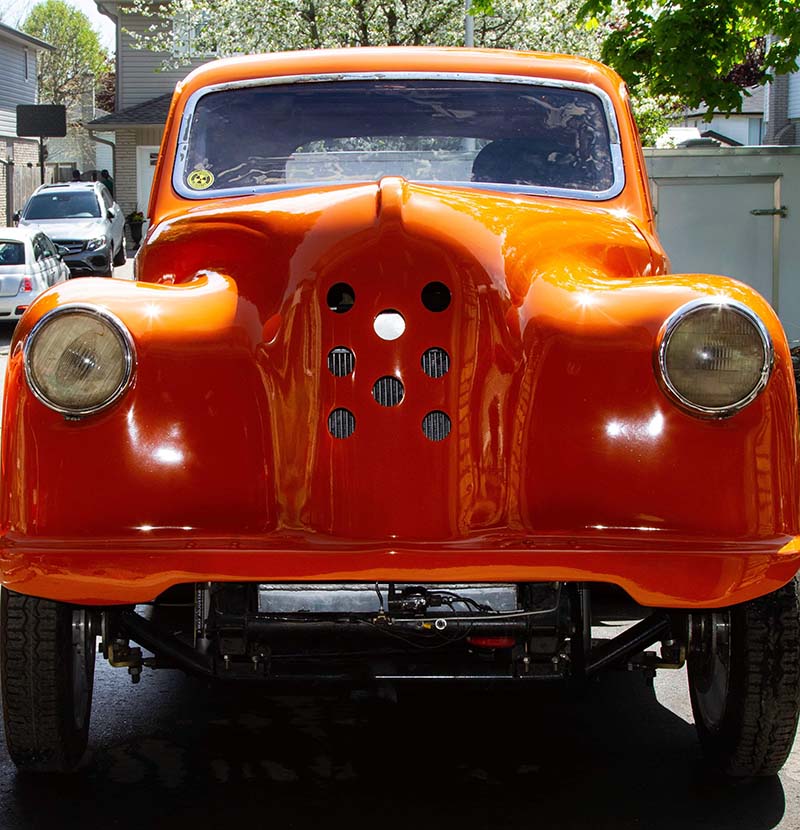A Brief History of Drag Racing, and Lil’ Nasty, the Austin Truck
Posted by Richard Hornby on Apr 14th 2020
The thrill of going fast can be traced back to the earliest days of internal combustion engine vehicles. Getting its start on the dry lake beds of California's desert in the 1930’s, drag racing is one of the largest motorsports in the world today. As the engines in cars got larger, drivers got more brave behind the wheel and were always pushing the limits in order to go faster. In the early days of racing, cars could be seen passing the 100 mph barrier quite regularly. Drivers of these early drag vehicles were inspired to continue testing new building abilities of the engines and bodies.
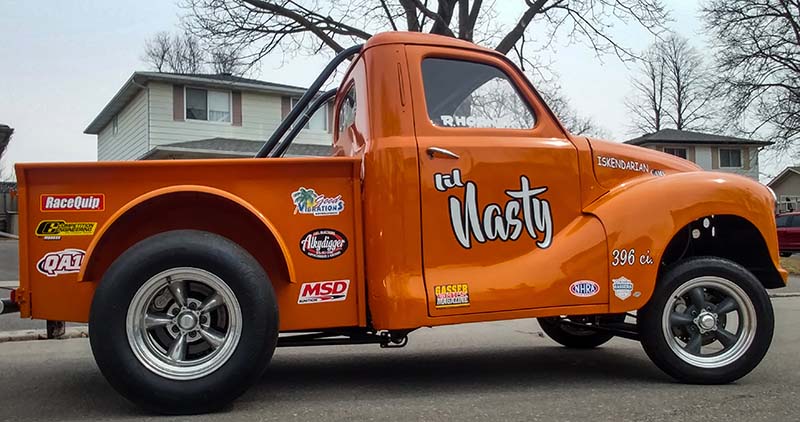
Though it had been an underground pastime for many for nearly 20 years already, drag racing got its sanctioned start in 1949, at the former Goleta airbase in California. The first event was very low-tech, the start of the race being determined by an official dropping their arms to their sides, and the finish line being 1 city block or, more accurately, a ¼ mile away from the start and the finish being signified by a line painted on the ground. There were no barriers to prevent the cars coming off track, and no standardized track conditions; just the best piece of desert the racers could find.
There was also no grandstand for the fans, who would line the sides of the track and watch the cars go roaring past. After a few years of these exciting but hazardous conditions, drags slowly began to become more regulated and safer for all those involved. This brought about the birth of the now world renowned NHRA (National Hot Rod Association) created by the great Wally Parks in 1951. This association was created to introduce and enforce improvements to health and safety regulations across the board. 9 years in, the NHRA introduced two new classes of racing, each developed with their own specifications: unmodified stock and top eliminator. Unmodified stock cars made up the lion's share of the drag vehicles at approximately 2/3rds and were stock looking vehicles made to be much faster than they were originally designed to be. Top Eliminator were specially designed, custom built drag cars that ran the fastest times.
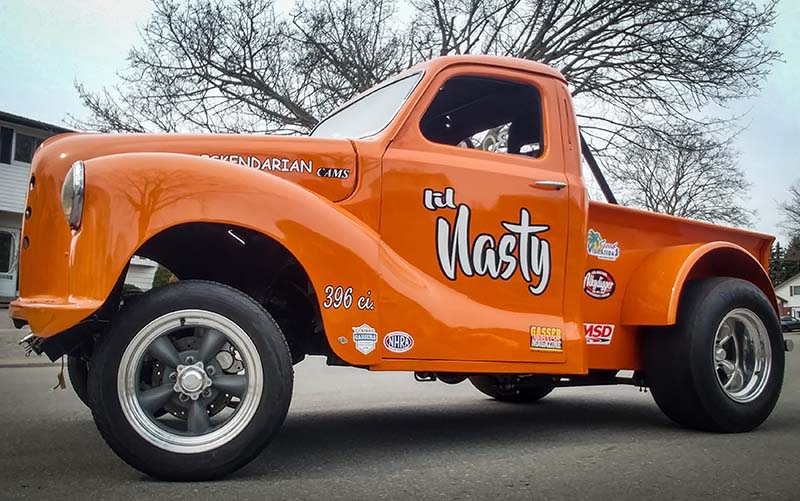
One of the fastest styles of car in the earliest days was the 'gasser', which still exists to this day and is being built by race enthusiasts out of the same models as in the 50’s. A modern example of the gasser is a 1949 Austin A40 called Lil’ Nasty. Lil’ Nasty was the brainchild of a man named Roger Hornby. Hornby, a retired millwright, has been building cars since he was a teenager. His passion began with building model cars of his favourite vehicles, which for the most part were Chevrolets.
He has been the builder of numerous cars and trucks throughout his life, from drag and show cars, to boats and even stock restorations. He has most recently built an alcohol front engine dragster and two gassers, one being Lil’ Nasty, and another out of a 1933 Willy's coupe adorned with the classic 1955 392ci hemi engine bored to a nice 404ci. Lil' Nasty is powered by a 505ci big block chevy engine, with a powerglide transmission transferring the power back, a ford rear end to send that power to the wheels, and a set of 10” Hoosier slicks to lay the power to the ground. To bring the truck to a halt, a DJ safety parachute is used in combination with a large set of disc brakes front and rear. From classic 1950’s inspiration, this truck is classified A/gas, which, before the days of the pro-stock cars, was the fastest stock appearing cars in the NHRA.

Gassers were most notably recognized by the tubular or beam axle in the front end, jacking it up and subsequently putting more weight on the rear tires allowing them to grab harder, providing function over style. Based on closed body cars, most typically from the 1930s-1960s, these beasts of the track were built for huge power and excessive weight reduction. Though built with more modern technology, Lil’ Nasty is no different. While it makes use of the original steel body, it has been fitted with a fiberglass front end and had a custom aluminum bed built to save as much weight as possible.
All of this sits on a custom built tube frame and is packed around a roll cage to provide the utmost in safety. Although the A/gas class was discontinued as a class by the NHRA in the 1970’s, it has remained a favourite amongst fans new and old alike. With sweeping body lines, bright paint colours and huge engines, it's no wonder they have remained timeless and continue to be built and run today.
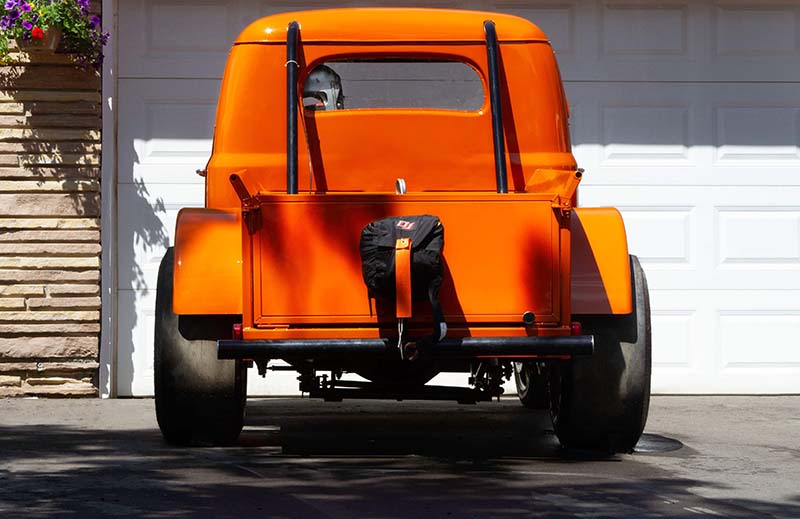
These days, custom race rides are built to be as safe as possible, often equipped with parachutes, fuel shut-offs, and fire suppression systems. A HANS (Head and Neck Support) device is attached to high end helmets, and racers are dressed in fire resistant suits to allow a little extra time to exit the vehicle quickly if they have an accident. In addition, safety measures like extra strong roll cages and frame and a vital 5-point harness ensure that drivers can focus on making great times on the track, instead of worrying about their own wellbeing and that of the vehicle. The risks of racing have been significantly minimized from those early days of salt tracks, no barriers and fan lined race lanes.
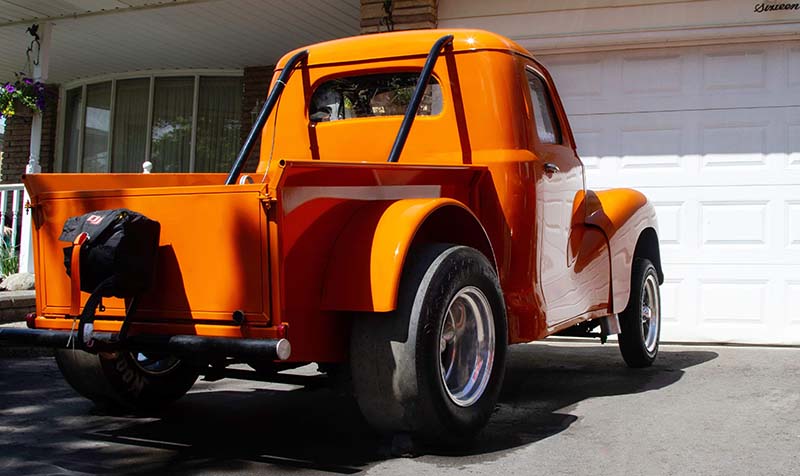
Race trucks, though they’ve been around for some time, are much more rare as a race vehicle. A unique thing about trucks is their versatility and the vast amount of race classes and additional uses they provide. Trucks are as handy as they are handsome : from trophy trucks and baja racers to monster trucks and tractor pulls, they're a main tool for farmers and construction workers alike. With racing trucks there comes a bit more intrigue - seeing a purpose-built workhorse fly down a track at 200mp/h against a car known for being fast is truly an impressive sight.
Having seen Lil' Nasty in action personally, I'd choose it over a Ford Mustang every day, for every race, forever. But I may be a bit biased, seeing as the talented and uber-creative man behind that machine, Roger Hornby, is my father.
